Lee Circle
Introduction
Text-to-speech Audio
In 1884, the city of New Orleans dedicated a statue and renamed this traffic circle was in honor of Confederate general Robert E. Lee. Prior to this time, the area was known as Trivoli Square. The movement to create a monument and rename the area in honor of the former Confederate leader was spurred by the Robert E. Lee Monumental Association, a group of Southerners who worked to create monuments following Lee's death in 1870. In recent years, this and other monuments that honor Confederate leaders has become a source of controversy. After renewed debates in 2015, the city council and mayor ordered the removal of this and three other statues.
This monument was removed on May 19, 2017, following the removal of three other New Orleans monuments: the Liberty Place monument, a statue of Jefferson Davis, and a statue of Confederate General P.G.T. Beauregard. You can watch a video and read the full transcript of Mayor Mitch Landrieu's May 19 speech at the link below.
Images
This statue of Robert E. Lee is one of four Confederate statues or monuments to the "Lost Cause" whose future is uncertain as the city and nation consider the meaning of these symbols.
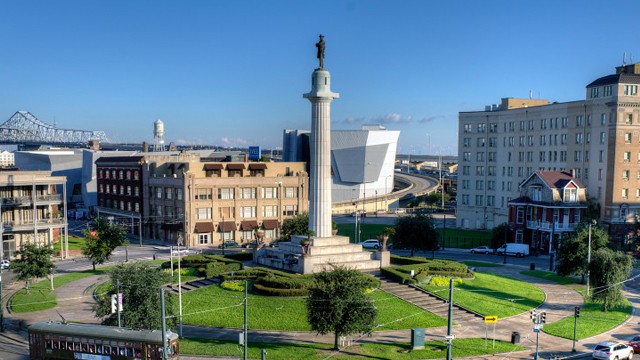
This postcard from the early 1900s shows Lee Circle a few decades after the statue of the Confederate leader was dedicated.
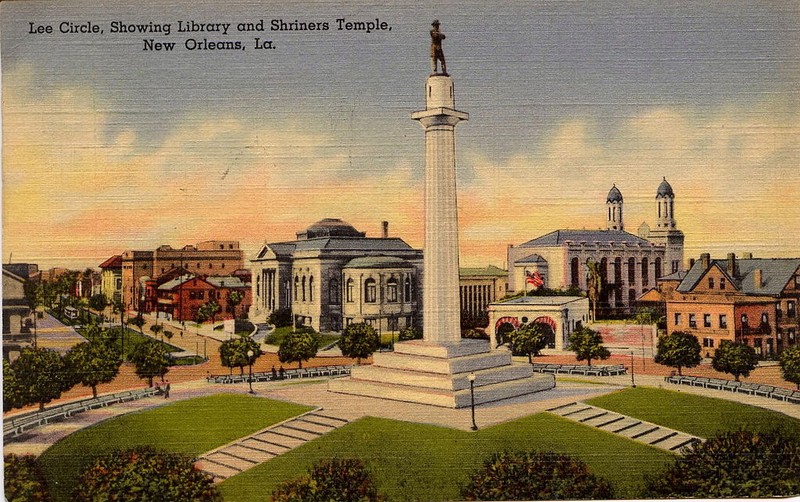
A view of St. Charles Avenue from Lee Circle in the 1870s.
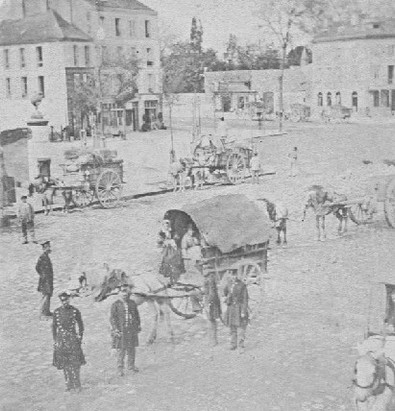
Mardi Gras 1901 at Lee Circle.
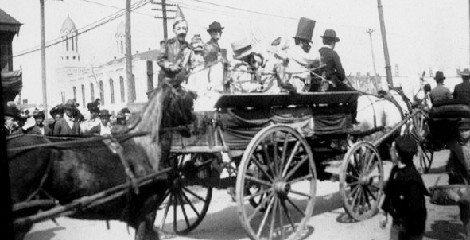
Removal of the Robert E. Lee statue in May 2017 (Scott Threlkeld/AP)
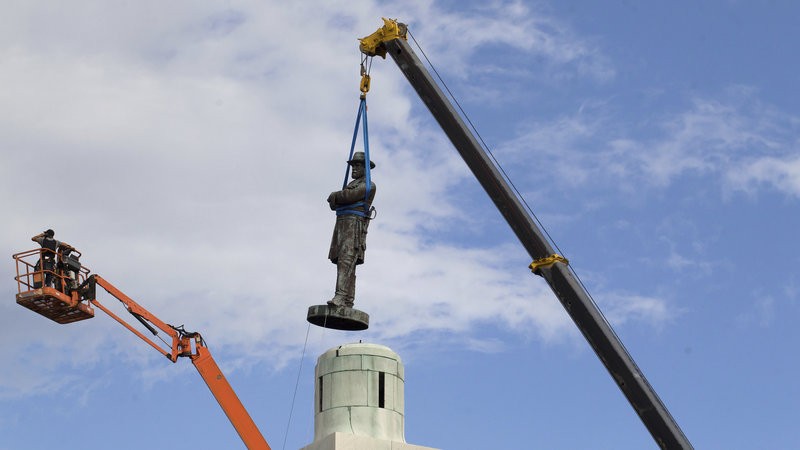
Backstory and Context
Text-to-speech Audio
Lee Circle functions today as a traffic circle on the popular St. Charles Avenue, but its original name was Place de Tivoli. Designed by surveyor and geographer Barthlemey Lafon in 1807, Place de Tivoli was originally a small, circular island surrounded by a canal. The circle, or place, was likely intended to be an amusement park with a carousel in the center. The location of Place de Tivoli marked it as the gateway between the older, downriver portions of the city and the newer, upriver sections. As such, it was a popular meeting place and for decades was a favorite spot on the Mardi Gras parade route.
After the Civil War, pro-Confederate groups across the South honored their veterans and the lost Southern cause with monuments and memorials, and New Orleans was no exception. The local Robert E. Lee Monument Society raised over $36,000 (nearly $700,000 today) in the early 1870s for the construction of a monument to Lee in the city. Dedicated in 1884, the monument consists of a 60-foot marble Doric columnn mounted on a massive granite base and topped with a 161/2 foot bronze statue of Robert E. Lee. After its dedication, Place de Tivoli was renamed Lee Circle. By the turn of the 20th century, several important buildings were located on the circle. These included the main branch of the New Orleans Public Library and the Jerusalem Hall.
After the Civil War, pro-Confederate groups across the South honored their veterans and the lost Southern cause with monuments and memorials, and New Orleans was no exception. The local Robert E. Lee Monument Society raised over $36,000 (nearly $700,000 today) in the early 1870s for the construction of a monument to Lee in the city. Dedicated in 1884, the monument consists of a 60-foot marble Doric columnn mounted on a massive granite base and topped with a 161/2 foot bronze statue of Robert E. Lee. After its dedication, Place de Tivoli was renamed Lee Circle. By the turn of the 20th century, several important buildings were located on the circle. These included the main branch of the New Orleans Public Library and the Jerusalem Hall.
Cite This Entry
Kennedy, Amelia. "Lee Circle." Clio: Your Guide to History. May 22, 2017. Accessed April 29, 2025. https://theclio.com/tour/124/1
Sources
Friends of the Cabildo. New Orleans Architecture, Volume I: Lower Garden District. Pelian Publishing Company, 1991.
Nicholson, Amber. "Robert E. Lee Monument," New Orleans Historical, www.neworleanshistorical.org/items/show/1279.
Wendland, Tegan. "With Lee Statue's Removal, Another Battle Of New Orleans Comes To A Close." NPR. May 20, 2017. Accessed May 22, 2017. http://www.npr.org/2017/05/20/529232823/with-lee-statues-removal-another-battle-of-new-orleans-comes....
Nicholson, Amber. "Robert E. Lee Monument," New Orleans Historical, www.neworleanshistorical.org/items/show/1279.
Wendland, Tegan. "With Lee Statue's Removal, Another Battle Of New Orleans Comes To A Close." NPR. May 20, 2017. Accessed May 22, 2017. http://www.npr.org/2017/05/20/529232823/with-lee-statues-removal-another-battle-of-new-orleans-comes....

